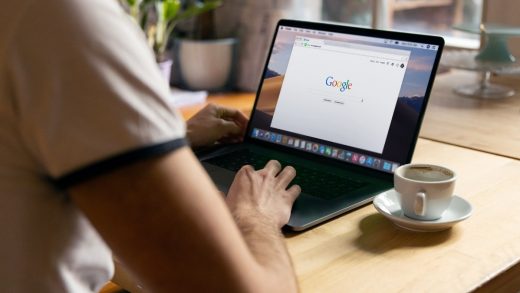![]()
When Google launched its Pixel 7a last year, it turned out to be a very interesting offering and one of the most feature-packed Pixel A-series devices ever, at least from a hardware standpoint. The Pixel 7a added features like wireless charging and an IP67 rating for dust and water resistance. This, coupled with its typically “Pixel” still imaging quality, made it a very attractive offering, keeping its Rs. 43,999 price tag in mind, which is still at the higher end of the mid-range segment.
This year, we haven’t gotten anything substantially new apart from the new Tensor G3 processor and a 120Hz refresh rate display, as pretty much most of the internal hardware remains identical to the Pixel 7a. Like Samsung, Google is banking on AI features (enabled by the Tensor G3) to convince users to upgrade to the latest model. So, what exactly do you get with the new Pixel 8a? Let me explain.
![]()
The Google Pixel 8a has a familiar design but with rounded corners and retains its IP67 certification
Apart from the not-so-obvious changes I mentioned above, the Pixel 8a does come with one big upgrade over the Pixel 7a, and that’s storage. Yes, users in India will finally have the option to pick between the 128GB storage variant (available at Rs. 52,999) and the new 256GB variant, which is available at Rs. 59,999. While it may seem like an attractive option, you have to keep in mind that the OnePlus 12 (which gets you a far better phone overall) is priced at Rs. 64,999 (for the 12GB RAM and 256GB storage variant) in India. RAM is still capped at 8GB, like on the Pixel 7a and even the premium Pixel 8.
The Pixel 8a’s design is the biggest and most noticeable visual change. There are two new colours – Bay and Aloe – to choose from, and they both stand out. I received the Bay finish, which reminds me of clear blue skies on a sunny summer day.
The phone’s overall design has gone from a rectangle with sharp corners to rounded corners. The rear panel is still made of polycarbonate but has a nice frosted matte finish. It feels quite different compared to what’s available on the Pixel 8 and the Pixel 8 Pro released last year. There is a flatter visor-like camera module, which barely protrudes from the rest of the rear panel. The edges of the rear panel and the camera seamlessly merge with the side frame, still offering that IP67 rating for dust and water resistance.
![]()
The Google Pixel 8a’s new 6.1-inch Actua display is flat but with a noticeably thick bezel
While the Pixel 7a switched to a 90Hz display (from the 60Hz display on the Pixel 6a), Google has now upgraded the Pixel 8a’s display to a 120Hz unit and given it its Actua branding. The 6.1-inch unit is properly flat with slightly curved edges on its protective glass on all four sides. What’s unmissable are those chunky bezels. Its thickest side is at the bottom, and the thick bezels somehow reminded me of the iPhone XR from 2018.
On the inside, Google went with the expected candidate, its Tensor G3 processor. It’s no performance workhorse, as we know from the Pixel 8 and Pixel 8 Pro, but it does bring several new AI-enabled features to the Pixel 8a or the A-series. There’s the new Magic Editor, Audio Eraser and many more features, including a more secure Face Unlock experience, which first appeared on the Pixel 8 and 8 Pro last year.
The cameras remain the same as last year. There’s a 64-megapixel primary camera that now promises SuperRes Zoom images up to 8X. It is accompanied by the same 13-megapixel ultrawide camera as on the Pixel 7a. Also, the same is the 13-megapixel selfie camera on the front.
The Pixel 8’s battery has grown bigger from the 4,385mAh unit on the Pixel 7a to a slightly larger 4,492mAh capacity. What has remained the same is the 18W wired charging and the same Qi-standard wireless charging.
![]()
The Pixel 8a’s camera system has not seen any upgrades over last year’s Pixel 7a
While the Pixel 8a looks refreshingly new (especially in its two new finishes), Google seems to be mostly playing around with the same hardware underneath. This reminds us of what Samsung has managed with its Galaxy S24 this year.
Meanwhile, interested buyers will get to play around with some new AI features, but it’s hard to justify its new price, which has now climbed and settled in the premium segment, closing the gap between itself and the premium Pixel 8. While the performance was never the highlight of the Pixel A series, the Pixel 8a will now be competing with some high-end premium heavyweights from Chinese brands and Samsung, which easily offer more flexible and capable camera hardware.
Can Google’s expertise in AI still make the Pixel 8a relevant and worthwhile in 2024? How much of an upgrade is the Pixel 8a over the Pixel 7a? And how much closer is it to the Pixel 8 in terms of value? Find the answers to the above questions and more in our full review, which will be out soon.


